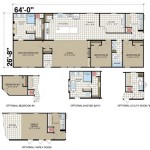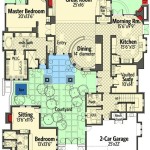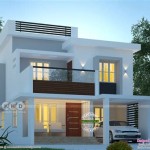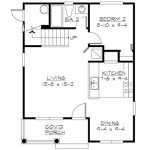Floor Plans for Prefab Homes: A Guide to Design and Customization
Prefab homes, also known as modular homes, offer a modern and efficient approach to homeownership. These homes are constructed off-site in a factory setting and then transported to the building site for assembly. While prefab homes provide numerous benefits, including faster construction times, cost-effectiveness, and increased sustainability, choosing the right floor plan is paramount. This article will explore the key considerations when selecting floor plans for prefab homes, highlighting the diverse options available and the customization possibilities.
Understanding Prefab Home Floor Plans
Prefab home floor plans are the blueprints that guide the construction process. They outline the layout of rooms, walls, windows, and doors, providing a visual representation of the home's interior. Floor plans for prefab homes are typically more standardized than those for custom-built homes, but they still offer a wide range of layouts to suit different needs and preferences. These plans are crucial for ensuring that the home meets the specific requirements of the homeowner, including square footage, number of bedrooms and bathrooms, and overall functionality.
Types of Floor Plans for Prefab Homes
Prefab home manufacturers offer a variety of floor plan options, catering to different lifestyles and family sizes. Some common types include:
- Single-story homes: These offer a more accessible and convenient living space, especially for families with young children or elderly individuals. They are often ideal for smaller lots.
- Two-story homes: These provide more square footage within a smaller footprint, making them suitable for families who need more space but have limited lot sizes.
- Open-concept homes: These feature interconnected living, dining, and kitchen areas, creating a spacious and airy feel.
- Traditional homes: These offer a classic layout with separate rooms for different functions, providing a sense of privacy and formality.
- Modern homes: These showcase minimalist design elements, clean lines, and an abundance of natural light.
Within these types, manufacturers offer various designs and configurations to suit diverse preferences. It's essential to browse through different floor plans and compare them based on your specific needs and budget.
Customization Options for Prefab Home Floor Plans
While prefab homes offer standardized floor plans, many manufacturers offer customization options to personalize the design. These modifications may include:
- Adding or removing rooms: Specific needs may require adding a bedroom, bathroom, or study, while others may want to simplify the layout by removing an unnecessary room.
- Changing room sizes: Adjusting the dimensions of rooms to accommodate furniture placement or specific activities is often possible.
- Altering window and door placement: Adjusting the position of windows and doors can improve natural light flow, ventilation, and views.
- Adding architectural details. Customizing exterior elements like porches, decks, or rooflines can personalize the look of the home.
It's important to note that customization options may have limitations depending on the manufacturer and the specific prefab home model. Always discuss your desired modifications with the manufacturer to ensure feasibility and avoid unnecessary delays or cost overruns.
Key Considerations for Selecting a Floor Plan
Choosing the right floor plan for a prefab home requires careful considerations. Here are some key factors to keep in mind:
- Lifestyle and family needs: The size and layout of the floor plan should accommodate the household's specific requirements, including the number of bedrooms, bathrooms, living spaces, and storage areas.
- Budget: Floor plans vary in size and complexity, directly impacting the overall cost of the home. Setting a realistic budget and exploring different options within that range is crucial.
- Lot size and orientation: The dimensions of the lot and its orientation towards the sun will affect the suitability of different floor plans. Consult with the manufacturer or an architect to determine the best fit.
- Energy efficiency: Prefab homes are typically more energy-efficient than traditional homes, but choosing a floor plan that maximizes natural light, ventilation, and insulation can further enhance sustainability.
By carefully considering these factors and exploring the various options available, you can find a prefab home floor plan that aligns perfectly with your vision for your dream home.

Modular Home Floorplans Next 574 334 9590

Modular Home Floor Plans Gordon S Homes

Modular House Plans Modularhomeowners Com

Top Five Most Popular Modular Home Floor Plans

Floor Plans Finish Werks

Modular Floor Plans Signature Building Systems

Modular Homes Floor Plan Model 9561 Home Plans

Modular Home Floor Plans Ma Prefab Builders Manufacturers Ri Vt Ct Me Ny

Modular Home Floor Plans The

Floor Plans Cvs 3242k1 0 Manufactured And Modular Homes In 2024 Home House Plan With Loft Small








